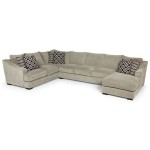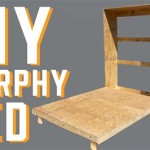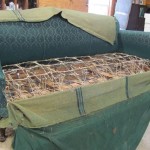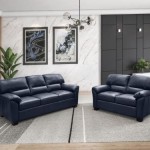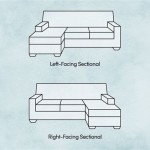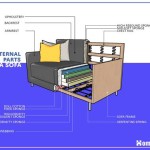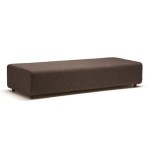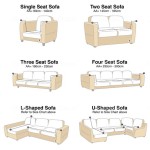Sectional Sleeper Sofa: A Comprehensive Guide
The sectional sleeper sofa represents a multifaceted furniture piece designed to maximize both seating and sleeping capacity within a given space. It combines the modularity and seating flexibility of a sectional sofa with the functionality of a pull-out or convertible bed. This dual-purpose characteristic makes it a valuable addition to apartments, guest rooms, home offices, and any area where space optimization is paramount.
The design of a sectional sleeper sofa inherently offers a versatile configuration. The sectional aspect allows for arrangement into different shapes, adapting to the room's layout and user preferences. This often includes L-shaped configurations, U-shaped layouts, or even separating individual components for more informal seating arrangements. The integration of a sleeper mechanism adds an extra dimension, providing a comfortable sleeping surface for overnight guests or individuals who prefer to sleep in a larger, more relaxed setting.
The construction of a sectional sleeper sofa typically involves a sturdy frame, often crafted from hardwood or reinforced metal, to ensure durability and longevity. The seating cushions are constructed with varying densities of foam and sometimes include innerspring components for optimized support and comfort. The upholstery materials encompass a wide range of options, including fabrics like microfiber, linen, and cotton blends, as well as leather or leather alternatives, each offering different aesthetic qualities and levels of durability and maintenance requirements. The sleeper mechanism itself can range from simple pull-out designs to more complex folding systems, each with its own advantages and drawbacks in terms of ease of use and comfort.
Understanding the Mechanics of Sleeper Mechanisms
The functionality of a sectional sleeper sofa is fundamentally linked to the type of sleeper mechanism it employs. Several mechanisms are commonly used, each impacting the ease of operation, comfort levels, and overall construction of the sofa.
The most prevalent mechanism is the pull-out sleeper. This design typically involves a mattress folded beneath the seating cushions. To convert it into a bed, the user pulls out the hidden frame and mattress, which unfolds to create a sleeping surface. The mattress in a pull-out sleeper is typically supported by a metal frame with springs or interwoven webbing for even weight distribution.
Another option is the convertible or futon-style sleeper. This design involves folding down the back cushions of the sofa to create a flat sleeping surface. While simpler in mechanism compared to pull-out sleepers, convertible sofas often have a firmer sleeping surface, as the back cushions themselves form the mattress. This type of sleeper sofa may be better suited for occasional use rather than regular nightly sleeping.
A less common but increasingly popular option is the platform sleeper mechanism. This design often involves a hidden storage compartment beneath the seating cushions, which, when opened, reveals a platform that extends the seating area into a larger sleeping surface. This type can use a dedicated mattress or simply utilize the existing seat cushions as part of the sleep surface. Platform sleepers generally offer a more streamlined appearance when in sofa mode, as the sleeper components are fully integrated and concealed.
The choice of sleeper mechanism directly influences the sofa's comfort, ease of use, and overall design. Factors to consider include the thickness and quality of the mattress, the smoothness of the pull-out mechanism, and the sturdiness of the supporting frame.
Key Considerations When Selecting a Sectional Sleeper Sofa
Choosing the right sectional sleeper sofa requires careful consideration of several key factors to ensure it meets individual needs and integrates seamlessly into the intended space.
First, the dimensions of the room and the available space are crucial. Measuring the area where the sofa will be placed, both in its standard seating configuration and when fully extended as a bed, is essential. This ensures that the sofa fits comfortably without obstructing movement or other furniture. Consider the placement of doorways, windows, and other architectural features that may impact the sofa's placement and functionality.
Second, the intended frequency of use should be taken into account. If the sleeper function will be used regularly, investing in a higher-quality mattress and a more robust sleeper mechanism is advisable. A thicker mattress with innerspring or memory foam construction will provide greater comfort for nightly sleep. A smooth and easily operable pull-out mechanism will also enhance the user experience. Conversely, if the sleeper function is only for occasional use, a more basic design with a simpler mechanism may suffice.
Third, the upholstery material should be selected based on lifestyle, aesthetic preferences, and anticipated wear and tear. Leather offers a luxurious look and is relatively durable, but requires regular maintenance. Microfiber is a popular choice for its stain resistance and ease of cleaning, making it a suitable option for families with children or pets. Linen offers a natural and breathable feel, but may be more prone to wrinkling and staining. The choice of upholstery should align with the desired aesthetic and the level of maintenance the user is willing to undertake.
Fourth, the style and design of the sectional sleeper sofa should complement the existing décor of the room. Consider the color palette, furniture styles, and overall ambiance when making a selection. Sectional sofas are available in a wide range of styles, from modern and minimalist to traditional and ornate. Choosing a sofa that harmonizes with the existing aesthetic will create a cohesive and visually appealing space.
Material and Construction Quality
The long-term durability and comfort of a sectional sleeper sofa are heavily influenced by the quality of its materials and construction. Examining these aspects closely before making a purchase is crucial.
The frame is the foundation of the sofa and should be constructed from durable materials such as hardwood or reinforced metal. Hardwood frames are known for their strength and longevity, while metal frames offer excellent support and resistance to bending or warping. Avoid sofas with frames made from particleboard or flimsy materials, as these are more likely to break down over time.
The seating cushions should be constructed with high-density foam to provide adequate support and resist sagging. Look for cushions that incorporate innerspring components or a combination of foam densities for enhanced comfort and durability. The seams and stitching of the cushions should be strong and evenly spaced to prevent tearing or unraveling.
The sleeper mechanism should be smooth and easy to operate, with sturdy hinges and locking mechanisms. Examine the frame of the pull-out bed for any signs of weakness or instability. The mattress should be of sufficient thickness and quality to provide a comfortable sleeping surface. Innerspring mattresses generally offer better support and breathability than all-foam mattresses.
The upholstery material should be durable and resistant to wear and tear. Check the fabric's weave and fiber content to assess its strength and resistance to abrasion. Look for upholstery that is treated with stain-resistant finishes or that can be easily cleaned with common household products. The backing of the upholstery should be securely attached to the frame to prevent it from separating or tearing.
Careful evaluation of materials and construction quality will ensure that the sectional sleeper sofa will provide years of comfortable seating and sleeping while maintaining its structural integrity and aesthetic appeal.
Ultimately, the selection of a sectional sleeper sofa is a multifaceted decision dependent on individual needs, space constraints, and aesthetic preferences. By carefully considering the mechanics, key selection points, and material quality, one can select a piece that optimally marries functionality and style.

Churanty Upholstery Sleeper Sectional Sofa Pull Out Bed With Storage Chaise Gray Com

Sectional Sleeper Sofa Timola L Mig Furniture

104 Pull Out Sleeper Sofa Reversible L Shape Sectional Couch With Storage Chaise And 2 Stools Modernluxe Target

Homestock Gray Reversible Air Leather Sleeper Sectional Sofa Storage Chaise 99320 The Home Depot

Vivian Sectional Sleeper Sofa W Right Chaise El Dorado Furniture

Lilola Home Haris Dark Gray Fabric Sleeper Sofa Sectional With Adjustable Headrest And Storage Ottoman 89138

Morden Fort Sectional Sleeper Sofa With Storage Reversible L Shape Velvet Gray Com

51 Sectional Sleeper Sofas To Maximize Your Space With Style

Noah Full Xl Sleeper Sectional Urban Natural Home
Infinity Fabric Sleeper Sectional With Chaise Lounge Storage Costco

